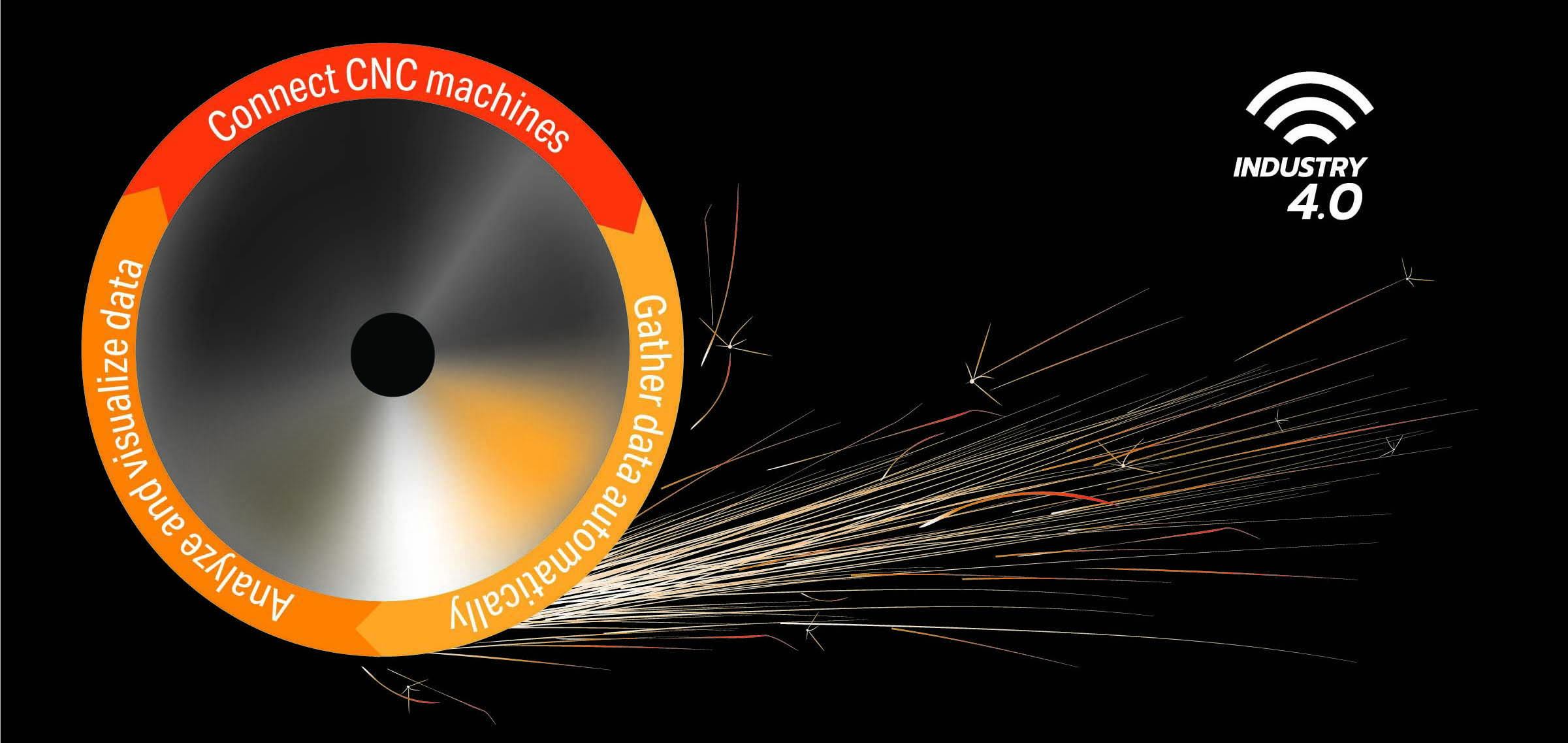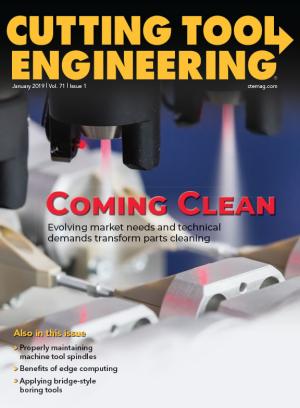Industry 4.0 continues to make inroads into all aspects of metalworking, including grinding. To turn a grinding machine into an Industry 4.0 smart grinding system, Norton | Saint-Gobain Abrasives introduced the Norton 4Sight process monitoring and diagnostics system.
Previously, when visiting customer facilities to help analyze and improve grinding processes, Norton | Saint-Gobain Abrasives application engineers used a field instrumentation system developed in-house, said Grace Beke, the company’s manager of technology development. Customers frequently asked the application engineers to leave the device so the customers could continue monitoring their grinding processes. These requests led to the design and development of the 4Sight system, which can be summarized in the following process flow: Connect CNC machines, gather data automatically, and analyze and visualize data through dashboards and reports.

“Due to the demand from the market and our customers, we decided to develop an external, real-time, cloud-based IIoT application, where we can come into a customer’s location, install the device to a machine, integrate it to our software and leave it there,” Beke said. “The beauty of the 4Sight system is that we don’t need to come in and install an internal IT infrastructure for machines built after 2012 due to the fact that the customer can self-install the system through the direction of our technical team.”
She added that a major feature of the system is the ability to provide grinding diagnostics and gain additional insight into a grinding cycle for troubleshooting and optimization. As a result, customers can extend wheel life, improve part quality, increase uptime, reduce scrap and boost throughput.
Customers can remotely monitor their grinding processes with the assistance of Norton and may also ask an application engineer for remote assistance, Beke said. For example, an application engineer might remotely log in and recommend that the customer reduce the power load on the spindle for a particular grinding cycle because the load is too high. “We have the ability to take that cumbersome data that comes from the grinding operation and analyze it in a very simple and user-friendly way for customers to understand their grinding processes and make smart and informed decisions.”
Norton uses multiple devices to connect any grinder or CNC machine to the system, Beke explained. The devices include an encrypted edge device (which serves as a gateway between machines and the public internet), a current clamp transducer sensor to pull current data, a digital input/output kit to integrate legacy machines (those built before 2012) and pull current sensor data, a data acquisition card to pull data from the clamp and a preconfigured tablet for operator engagement.
“With our expertise in grinding, we can help customers better analyze and understand their grinding processes,” she said.
In addition to handling grinding diagnostics, with the ability to select any metric to measure, such as current sensor rate, and compare the data gathered over time, the system targets operational efficiency metrics, such as overall equipment efficiency, utilization rate, machine downtime and parts goal.
“Having all this data at your fingertips helps the operator, supervisor and management to analyze and see what’s really happening on the shop floor,” Beke said. “It helps reduce bottlenecks with production visibility, maximize productivity, improve customer satisfaction, increase supply chain transparency and allows customers to operate more machines with fewer resources to make educated decisions on their grinding processes.”
She emphasized that one goal is to enable operators to feel engaged rather than believing that management is acting as Big Brother by watching their every move. “We provide operator engagement in order to meet production goals and give them a voice, record what’s happening and communicate to the supervisor on what needs to be done. Customers can also leverage historical data to inform future production cycle decisions, and the accumulating data helps to design new products faster at a lower cost.”
Contact Details
Related Glossary Terms
- computer numerical control ( CNC)
computer numerical control ( CNC)
Microprocessor-based controller dedicated to a machine tool that permits the creation or modification of parts. Programmed numerical control activates the machine’s servos and spindle drives and controls the various machining operations. See DNC, direct numerical control; NC, numerical control.
- grinding
grinding
Machining operation in which material is removed from the workpiece by a powered abrasive wheel, stone, belt, paste, sheet, compound, slurry, etc. Takes various forms: surface grinding (creates flat and/or squared surfaces); cylindrical grinding (for external cylindrical and tapered shapes, fillets, undercuts, etc.); centerless grinding; chamfering; thread and form grinding; tool and cutter grinding; offhand grinding; lapping and polishing (grinding with extremely fine grits to create ultrasmooth surfaces); honing; and disc grinding.
- grinding machine
grinding machine
Powers a grinding wheel or other abrasive tool for the purpose of removing metal and finishing workpieces to close tolerances. Provides smooth, square, parallel and accurate workpiece surfaces. When ultrasmooth surfaces and finishes on the order of microns are required, lapping and honing machines (precision grinders that run abrasives with extremely fine, uniform grits) are used. In its “finishing” role, the grinder is perhaps the most widely used machine tool. Various styles are available: bench and pedestal grinders for sharpening lathe bits and drills; surface grinders for producing square, parallel, smooth and accurate parts; cylindrical and centerless grinders; center-hole grinders; form grinders; facemill and endmill grinders; gear-cutting grinders; jig grinders; abrasive belt (backstand, swing-frame, belt-roll) grinders; tool and cutter grinders for sharpening and resharpening cutting tools; carbide grinders; hand-held die grinders; and abrasive cutoff saws.
- metalworking
metalworking
Any manufacturing process in which metal is processed or machined such that the workpiece is given a new shape. Broadly defined, the term includes processes such as design and layout, heat-treating, material handling and inspection.


